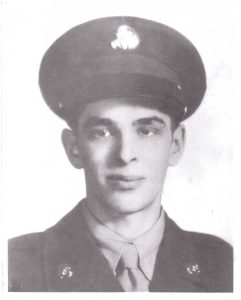
Eldon Raymond Bradley from Indiana, Saint Joseph county.
Service era: Korea
Date of death: Thursday, November 2, 1950
Death details: During the last week of October 1950, Republic of Korea (ROK) Army forces under the control of the U.S. Eighth Army were advancing deep in North Korean territory, approaching the Yalu River on the Chinese-Korean border. Chinese Communist Forces (CCF) struck back in a surprise attack, engaging the ROK 1st and 6th Divisions near Unsan, some sixty miles north of Pyongyang. The U.S. 1st Cavalry Division, with the 8th Cavalry Regiment in the lead, was rushed forward to reinforce the ROK units in the Unsan area. On November 1, the regiment’s 1st Battalion took up positions north of Unsan, while the 2nd Battalion moved to guard the Nammyon River valley west of town, and the 3rd Battalion was placed in reserve at the valley’s southern end. Corporal Eldon R. Bradley, who joined the U.S. Army from Indiana, was a member of Company E of the 2nd Battalion, 8th Cavalry Regiment, 1st Cavalry Division. On November 1, 1950, the 8th Cavalry Regiment was conducting defensive operations against encroaching CCF in the Unsan area, and was ordered to withdraw after receiving intense rocket and mortar attacks and infantry assaults. Company E fought its way through Unsan, a village that was by then infiltrated with Chinese forces that had attacked U.S. forces with small arms fire from rooftops and behind roadblocks. At some point during this combat, CPL Bradley was taken as a prisoner of war and was marched northwest to Sambakkol, then to Camp 5 at Pyoktong on the Yalu River. Repatriated prisoners reported in 1953 that CPL Bradley died between March and May 1951, at Pyoktong, after suffering from malnutrition, and was buried at the prison. Since the close of the war, his remains have not been associated with remains that North Korean officials returned to U.S. custody. Today, Corporal Bradley is memorialized on the Courts of the Missing at the National Memorial Cemetery of the Pacific.
Source: National Archives, Defense POW/MIA Accounting Agency

